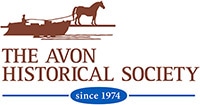Earlier this winter, AHS President Terri Wilson, who was a Spanish teacher at Ethel Walker’s in 1983, re-donated desks given to AHS from Ethel Walker in 1976, for display in the new interactive museum.
Story & Images Courtesy of Ethel Walker School
The purpose for the tactile exhibitions, according to archivist Kim Thacker, is two-fold:
“Because most museums do not encourage touching the artifacts on display, museums in general are not known as friendly spaces to anyone who has vision impairments. I want our museum to be fully accessible — at least as much as the physical space and safety and practicality will allow — to everyone. That is why anyone who visits will be able to touch items in the museum as well as be conducted through the space via audio tour. No one should feel as if displays of their history are inaccessible to them.

This topic of combining artifacts and archives in experiential learning, is one which Thacker will address as a speaker at the bi-annual New England Archivists Conference in Portsmouth, NH this spring. The museum at Walker’s, and its contents, will feature in her address to the gathered archivists.
Some of the museum’s contents include artifacts that Thacker, and several colleagues who expressed interest in accompanying her, found in a woodland dump-site on Walker’s grounds. These items relate to the School’s early history and include ink bottles, fountain pen nibs, jewelry, a pocket watch, a ceramic toothbrush, bottles of hand and face cream, porcelain and stoneware dishes, and much more. Several of the items that Thacker and others have found are on display in the museum.

The Ethel Walker School Interactive Museum is open to community members who wish to visit. Students, faculty, staff, and administrators are free to enter the museum during regular library hours. Other community members can schedule a tour by emailing archivist Kim Thacker at [email protected]. The museum will be open during Reunion 2023.

